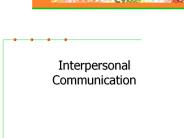Enhancing Communication - PowerPoint PPT Presentation
1 / 33
Title:
Enhancing Communication
Description:
A little about us. Self-contained program for children with ASD. Preschool aged students ... Core characteristics of Autism Spectrum Disorder. How do we reflect ... – PowerPoint PPT presentation
Number of Views:52
Avg rating:3.0/5.0
Title: Enhancing Communication
1
Enhancing Communication
- Robin Tilwick
- Debbie Drayton Nelson
- START Conference
- April 28, 2005
2
A little about us
- Self-contained program for children with ASD
- Preschool aged students
- Ages 3-4
- Ages 4-6
3
Communication Deficits Affect.
Behavior
Socialization
Academics
4
What Drives Communication in Individuals with ASD?
- Immediate needs/desires
- Need for sameness (repetitive, predictable)
- Idiosyncratic interests
5
Basic Philosophy
- Communication is taking place.
- We must expect it.
- We must look for it
- We must recognize it.
- We must plan for it.
- We must shape it.
- We must reinforce it.
6
Goal of all teaching is to.
- Develop functional skills
- Foster and develop independence
7
Intervention should reflect
- Individuals current level of performance
- Varied approaches to intervention
- Core characteristics of Autism Spectrum Disorder
8
How do we reflect our philosophy
- Assessment of Communication
- What are they doing?
- How are they doing it?
- Whom are they doing it with?
- Where are they doing it?
- When are they doing it?
- How often?
- (Reflecting individuals current level of
performance.)
9
Intervention
- Capitalize on childs strengths
- Meet individual needs
- Provide for initial teaching, practice and
generalization - Emphasize functional communication and foster
independence
10
Where do we start?
- Improve joint attention
- Improve early social/communicative turn taking
- Increase tolerance of others and interactions
with others
11
Where do we start?
- Develop ability to get needs/wants known make
choices and indicate preferences - Replace less desirable behaviors with more
desirable. - Improve understanding of functional directions
and daily routines. - Increase understanding of core vocabulary
12
Developing a Communication Environment
13
Set the stage
- Philosophical stage
- Physical environment
- Time
14
Developing Communication Skills
- Must occur all day every day with many different
people. - Embedded within the curriculum and all
activities.
15
Developing a Communication Environment
- ALWAYS have a childs communication system
available - Use predictable routines to help them know how to
participate in an activity - Use visual supports to support the communication
of basic needs and desires
16
Snack at Bowling
I Want Pudding.
I Want Kit Kat.
17
PECS in Gross Motor Room
Easel is always set up and ready for children.
I Want bowling
18
Physical Environment
- Help student get ready to learn
- Limit distractions
- Enhance understanding
- Establish need
19
- Provide motivation
- Tap into their strengths
- Provide reinforcement, practice and
generalization
20
Establishing the Need
- Manipulate the environment
- In sight but out of reach.
- Available but inoperable
- Small quantities
21
Time and Opportunities
- Expect communication
- Set communication enhancement and development a
priority. - Plan for communication opportunities
- Give the child time .
22
Manipulate the Situation
- Give small pieces or amounts
- Give the wrong thing
- Add a surprise element
23
Manipulate the Situation
- Be quiet
- Act unaware
- Provide choices
24
Provide Communication Support
- Provide Visual Cues
- To facilitate understanding and organization
- To demonstrate/clarify how to respond
- To minimize failure and maximize success
25
Different Approaches
- 1) Adult directed
- 2) Child led
- 3) Facilitator-Responder
26
Teach Routines
27
Teach Routines
- What is a routine?
- Why teach them?
- How do they help?
- Something we do the same say every day.
- Help child make sense of the world.
- They are repetitive and predictable
- Meaning becomes clearer over time.
- More interactive overtime
- Vehicle for teaching additional skills
28
Learning to Request
29
- Picture Exchange Communication System
- Actions and Gestures
- Words and phrases
30
Making Needs Known
31
Making Needs Known
- Asking for help
- Yes/No
- Making choices
32
Is it Functional?
33
Daniel says it best...
- If my possessions were taken from me with one
exception, I would choose to keep the power of
communication, for by it I would soon regain all
the rest - Daniel Webster































